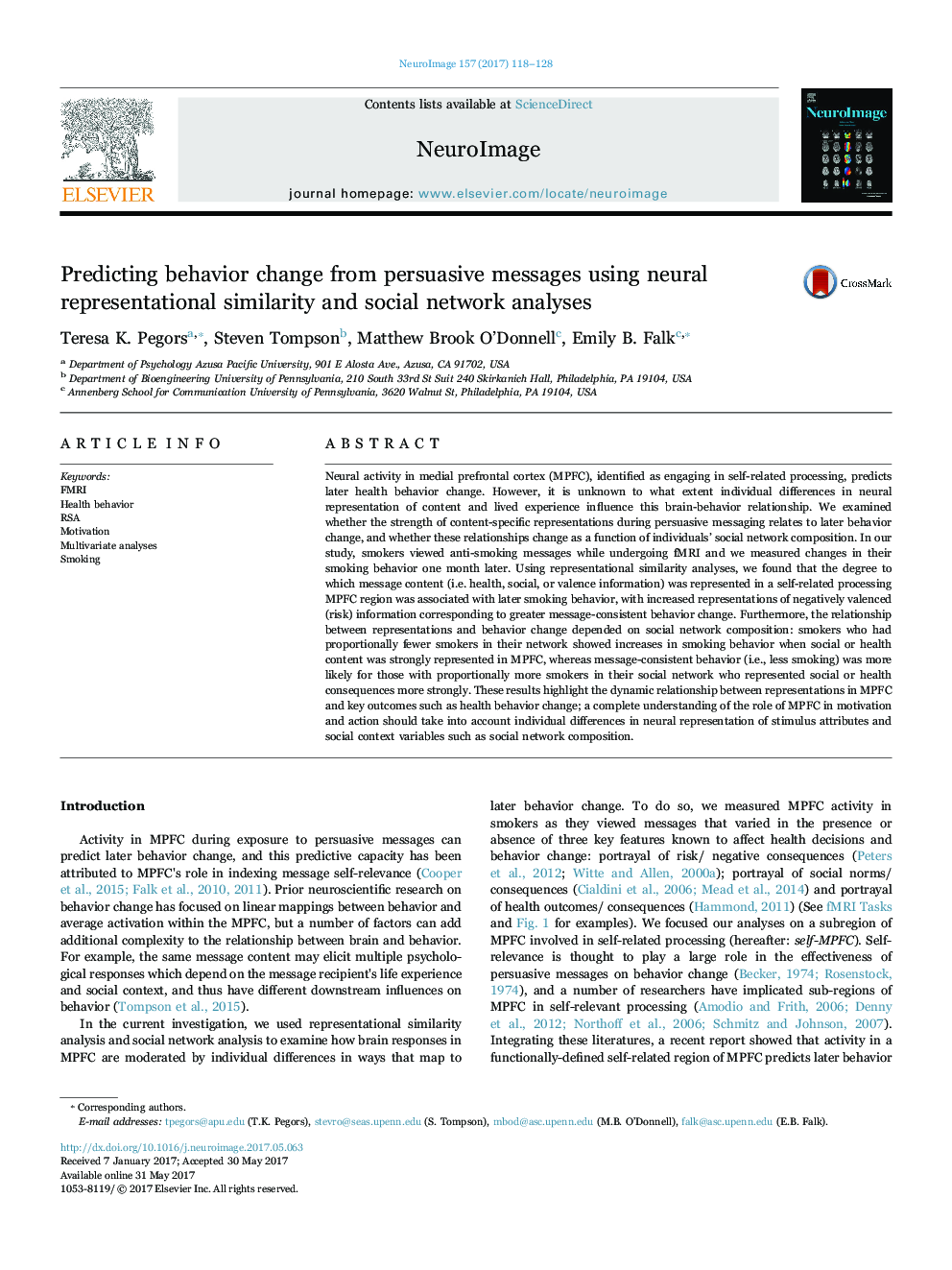| کد مقاله | کد نشریه | سال انتشار | مقاله انگلیسی | نسخه تمام متن |
|---|---|---|---|---|
| 5630904 | 1580853 | 2017 | 11 صفحه PDF | دانلود رایگان |
- Differences in neural representations of message content predict later behavior.
- Strong neural representations of valence in MPFC reduce later smoking behavior.
- Subjects' social network moderates influence of social representations on behavior.
- Brain representations and social network analysis advance behavioral insight.
Neural activity in medial prefrontal cortex (MPFC), identified as engaging in self-related processing, predicts later health behavior change. However, it is unknown to what extent individual differences in neural representation of content and lived experience influence this brain-behavior relationship. We examined whether the strength of content-specific representations during persuasive messaging relates to later behavior change, and whether these relationships change as a function of individuals' social network composition. In our study, smokers viewed anti-smoking messages while undergoing fMRI and we measured changes in their smoking behavior one month later. Using representational similarity analyses, we found that the degree to which message content (i.e. health, social, or valence information) was represented in a self-related processing MPFC region was associated with later smoking behavior, with increased representations of negatively valenced (risk) information corresponding to greater message-consistent behavior change. Furthermore, the relationship between representations and behavior change depended on social network composition: smokers who had proportionally fewer smokers in their network showed increases in smoking behavior when social or health content was strongly represented in MPFC, whereas message-consistent behavior (i.e., less smoking) was more likely for those with proportionally more smokers in their social network who represented social or health consequences more strongly. These results highlight the dynamic relationship between representations in MPFC and key outcomes such as health behavior change; a complete understanding of the role of MPFC in motivation and action should take into account individual differences in neural representation of stimulus attributes and social context variables such as social network composition.
Journal: NeuroImage - Volume 157, 15 August 2017, Pages 118-128
